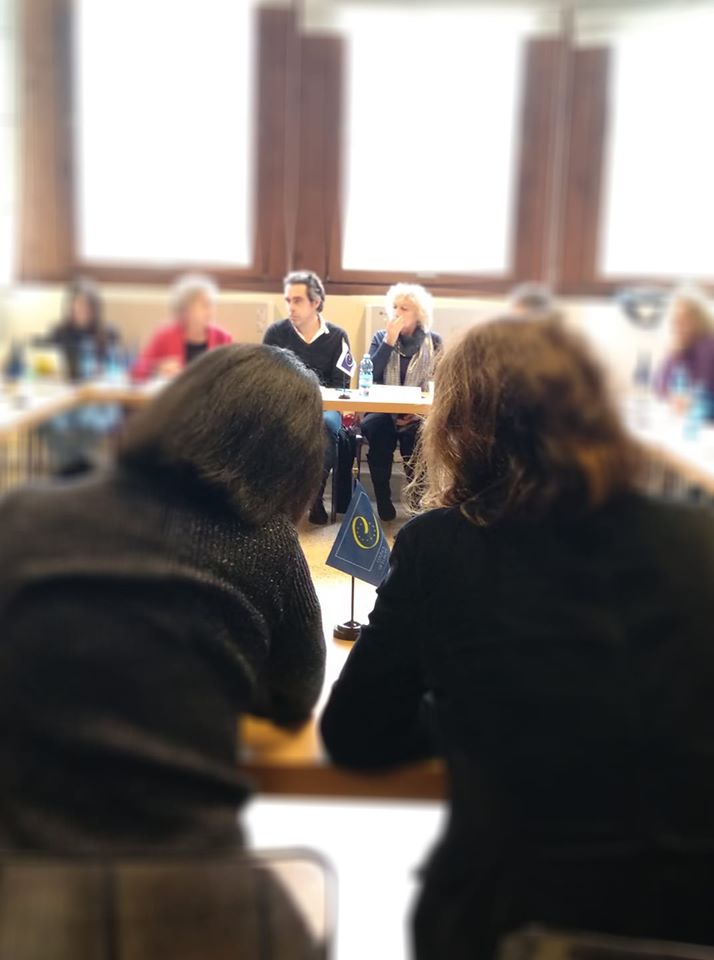![]()
Written by Sarah Court and Gamini Wijesuriya, People-Centred Approaches Programme & Project Manager, ICCROM – From GUIDANCE NOTE – ICCROM 2015
Although genuine community engagement in heritage remains a huge challenge, significant experience has already been gained in some heritage places with publications and other tools available that share approaches and offer guidance. Some examples are given below.
Training
Among other organizations, ICCROM provides specific capacity-building initiatives related to the conservation of cultural heritage. In particular, a new course on Engaging Communities has been developed, primarily aimed at conservation practitioners, to provide the necessary knowledge and tools to work more effectively with communities through existing management systems. This course will also be used as an opportunity to create a forum for participants to share their experiences from both the cultural and natural heritage sectors, learning from each other and other heritage practitioners who are actively involved with communities.
Promoting People-Centred Approaches To Conservation: Living Heritage
Participatory management
Stakeholder analysis can be an important first step to opening up a management system to participatory approaches. By identifying the range of stakeholders and interest groups, analysis can then be carried out to identify which groups and communities could be engaged. Example of how to go about this can be found in:
- Hockings, M. et al. (2008) Enhancing Our Heritage Toolkit. Assessing Management Effectiveness of Natural World Heritage Sites. Tool 3: Relationships with Stakeholders. Paris: UNESCO World Heritage Centre.
- Myers, D., Smith, S.N. & Shaer, M. (2010) A Didactic Case Study of Jarash Archaeological Site, Jordan: Stakeholders and Heritage Values in Site Management. Activity 2: Identify Stakeholders. GCI.
- Heritage organizations can provide engagement opportunities and involve others in decision- making. An example of practical guidance in this area can be found at:
- Trow, S. & Tunnicliffe, S. (2011) Knowing Your Place: Heritage and Community-led Planning in the Countryside. London: English Heritage.
- Cultural mapping
Cultural mapping is: ‘the set of activities and processes for exploring, discovering, documenting, examining, analysing, interpreting, presenting and sharing information related to people, communities, societies, places and material products and practices associated with those people and places’9. The process of cultural mapping can provide a meaningful and active role for community members and the results can be used in a variety of ways to promote community dignity, social inclusion, sustainable tourism, etc. There are several practical guides to carrying out cultural mapping, including:
- Galla, A. (2011) Museums, Cultural Mapping and Heritage Tourism in Southeast Asia. Pacific Asia Observatory & ICOM: Brisbane & Paris.
- Taylor, K. & Cook, I. (2012) A Contemporary Guide to Cultural Mapping. An ASEAN Australia Perspective. Jakarta: ASEAN
- Flavelle, A. (2002) Mapping Our Land: A guide to Making Maps of Our Own Communities and Traditional Lands. Lone Pine Foundation, Edmonton
- Clark, I., Sutherland, J., and Young, G. (1995) Mapping Culture – A Guide for Cultural and Economic Development in Communities. AGPS: Canberra.
Heritage interpretation
Heritage interpretation is: ‘any communication process designed to reveal meanings and relationships of cultural and natural heritage to the public, through first-hand involvement with an object, artifact, landscape or site’10. These processes have the potential to be participatory and allow individuals and communities to identify heritage values and share them with others. Again there are examples of toolkits that help practitioners and communities to use interpretation to explore their heritage:
- Brochu, L. & Merriman, T. (2011) Put the HEART Back in Your Community: Community Experience Planning. Fort Collins, CO: Heartfelt Publications
- Porter, J. et al. (2010) Talking About Our Place Toolkit. Inverness: Scottish Natural Heritage.
- GKA (2007) Local Interpretation Plans: a Tool Kit to Help Communities Explore Local Heritage. Cardiff: Groundwork Wales/Herian.
Asset-based community development
It has been noted that even disadvantaged communities have capacities and assets that can benefit their own development and their heritage resources. Guidance on identifying and mobilizing those assets that already exist within a community can be found in:
- Kretzmann, J.P., & McKnight, J.L. (1993) Building Communities from the Inside Out: a Path Toward Finding and Mobilizing a Community’s Assets. Skokie, IL: ACTA Publications.
Case study examples
Much can be gained from examining the experiences of others in similar situations. Case studies that explore the potential benefits to be gained from heritage with some examples of community engagement can be found in:
- Brown, J. & Hay-Edie, T. (2013) COMPACT: Engaging Local Communities in the Stewardship of World Heritage. New York: UNDP.
- Galla, A. (ed.) (2012) World Heritage.

